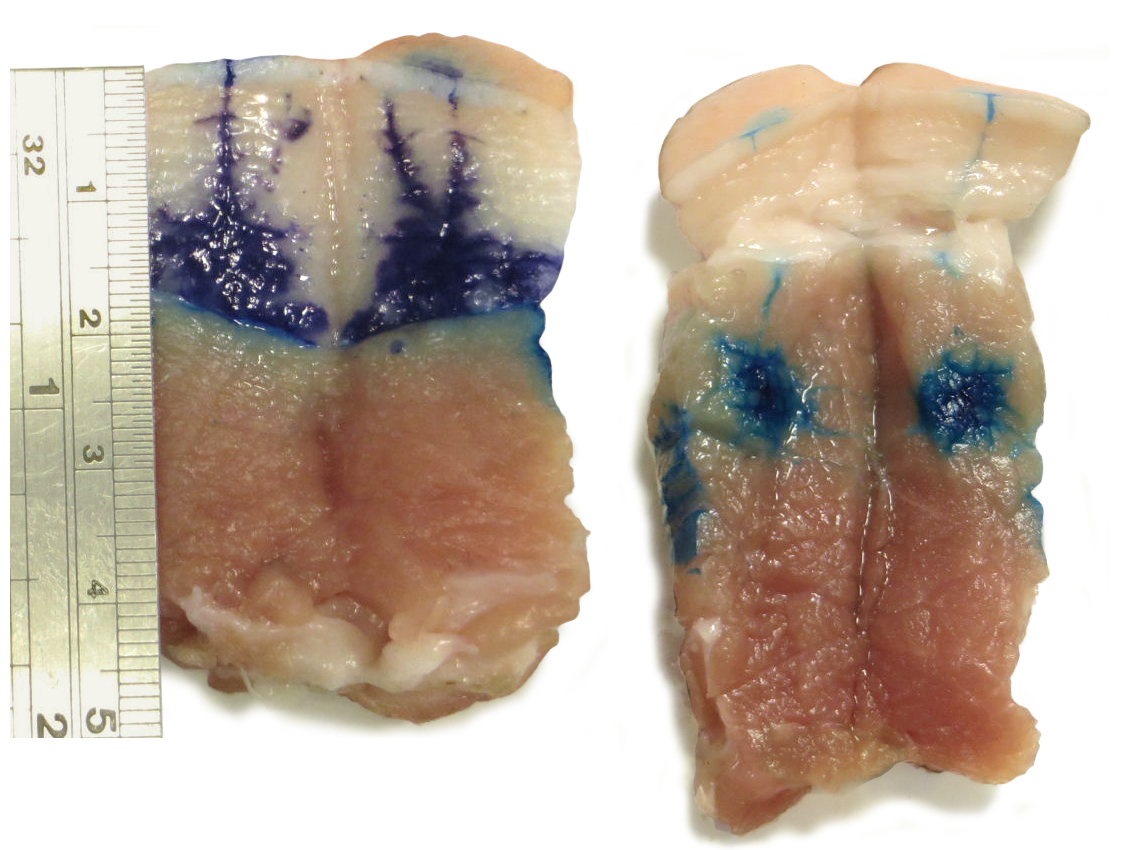The needle should reach the muscle
It has been suggested that compression and expulsion forces of AAIs may push subcutaneous fat injections into the muscle. A recent study, investigating Epipen injections into Porcine tissue, only demonstrated these forces when the injection occurs within the muscle, not from subcutaneous fat, into muscle.1
When injecting adrenaline into subcutaneous fat, the connective tissue barrier (e.g. fascia lata) stops the adrenaline from entering the muscle. Intramuscular delivery is only achieved if the needle penetrates the fascia and reaches the muscle.2
Dr Pumphrey concludes “Effective intramuscular injection requires that the needle orifice is wholly within muscle at the time of injection.”2

Injections into porcine tissue using Epipens show that where the fat is thicker than the needle length, the adrenaline will remain subcutaneous.2 Image reproduced with kind permission of Dr. Richard Pumphrey.
< Emerade adrenaline auto-injector
References
- Song, T.T., N.L. Merrill, and J.W. Cole, Delivery depth of epinephrine by auto-injector into the subcutaneous tissue of pig. Annals of Allergy, Asthma & Immunology, 2013. 111(2): p. 143-145.
- Diacono, D., et al. Deep fascia of the thigh forms an impenetrable barrier to fluid injected subcutaneously by autoinjectors. J Allergy Clin Immunol Pract, 2015;3:297-9.